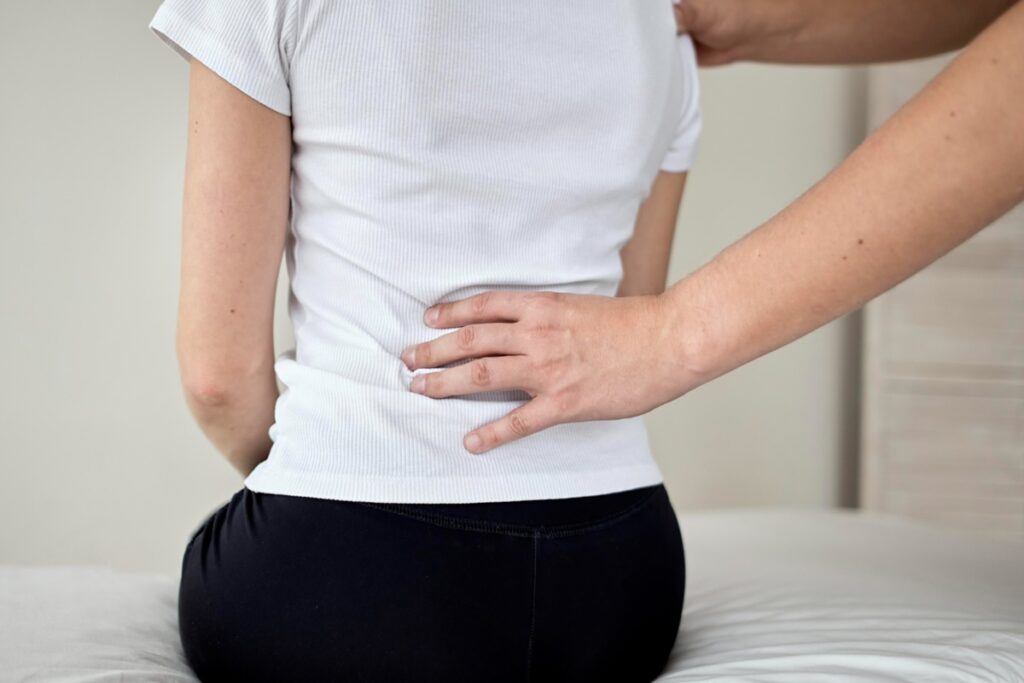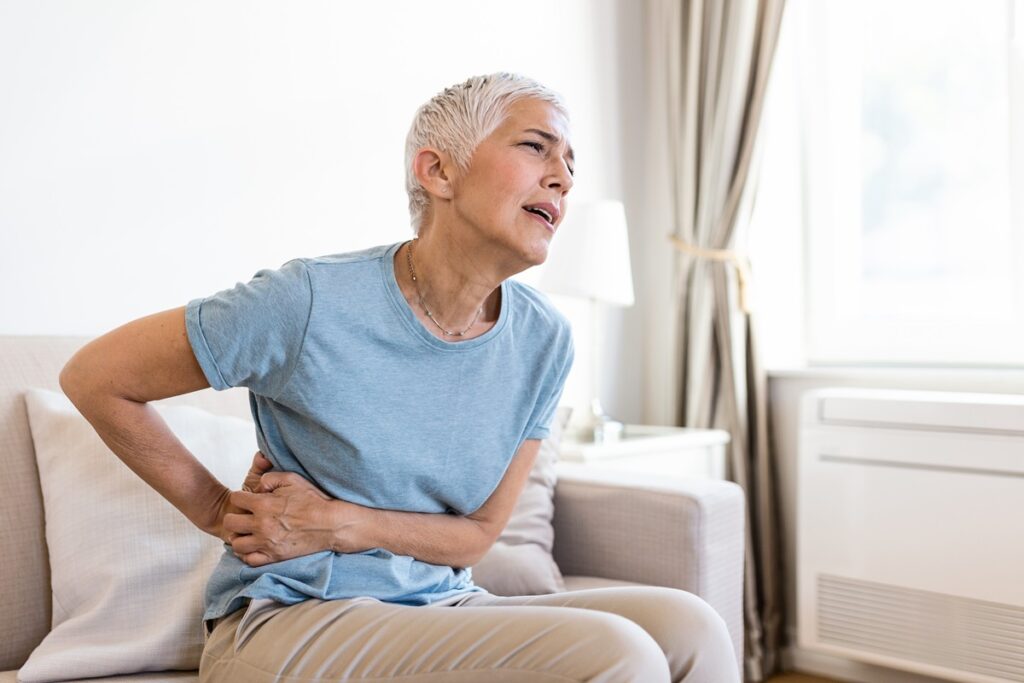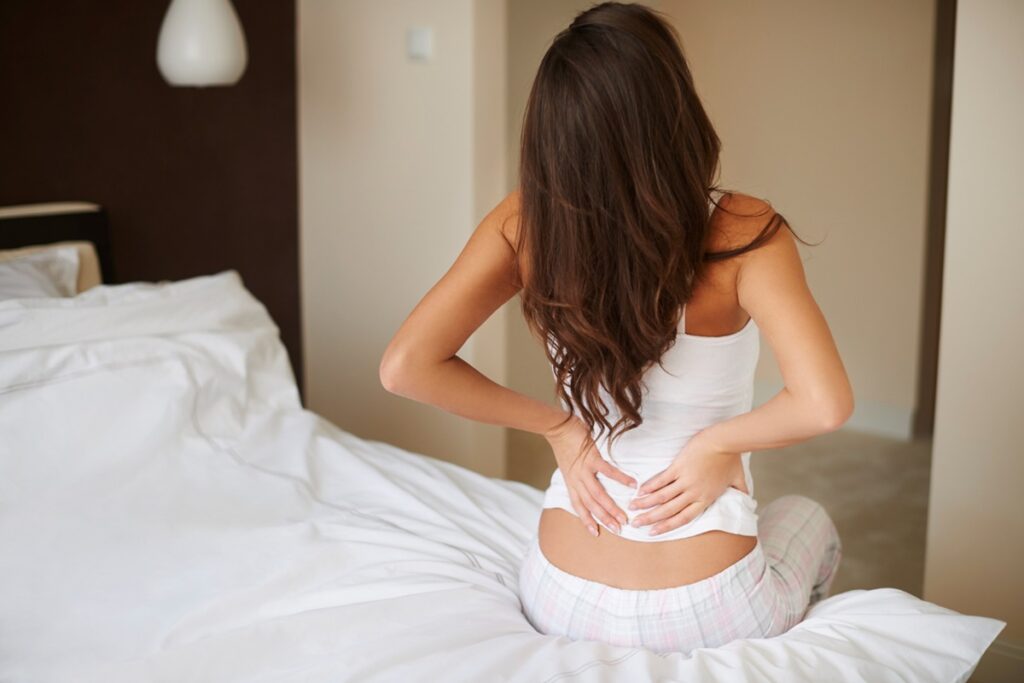Introduction Hip and knee pain can disrupt our daily lives and hinder mobility. Understanding the intricate connection between these two vital joints is crucial for managing and preventing discomfort. Let's explore hip and knee pain, their anatomy, common causes, and effective treatment options. Anatomy of the Hip and Knee Joints: What Connects the Two To …
Hip and Knee Pain: How Are They Related

Introduction
Hip and knee pain can disrupt our daily lives and hinder mobility. Understanding the intricate connection between these two vital joints is crucial for managing and preventing discomfort. Let’s explore hip and knee pain, their anatomy, common causes, and effective treatment options.
Anatomy of the Hip and Knee Joints: What Connects the Two
To comprehend hip and knee pain dynamics, we must first grasp the anatomy that links these two joints. Ligaments, tendons, and muscles intricately connect the hip and knee joints. This interdependence is pivotal in our body’s overall movement and functionality.
How Hip Issues Impact the Knees
Hip issues can have a cascading effect on the knees. A malfunction in the hip joint alters the gait and mechanics of our lower body, putting excess pressure on the knees. This leads to pain, inflammation, and a compromised range of motion in both joints.
The Knee’s Influence on Hip Pain

Conversely, knee problems can contribute to hip pain. The proximity and shared load-bearing responsibilities mean that issues in one joint can transmit stress to the other. Understanding this reciprocal relationship is essential for effective pain management.
Common Causes of Hip and Knee Pain
Hip and knee pain can be rooted from various sources, each demanding a tailored approach for relief.
Let’s explore common causes in detail.
Osteoarthritis
In 2019, approximately 528 million individuals worldwide were dealing with osteoarthritis, marking a 113% increase since 1990. Osteoarthritis, a degenerative joint disease, can affect both the hip and knee joints, initiating pain, stiffness, and reduced mobility. As the cartilage breaks down, bones may rub against each other, leading to discomfort.
Tendonitis
Tendonitis involves the inflammation of tendons connecting muscles to bones. In hip and knee pain, tendonitis can develop due to overuse or injury, intensifying discomfort in these joints.
Sciatica
Sciatica, characterized by pain spreading from the lower back down to the leg, can contribute to hip and knee pain. The sciatic nerve’s compression can lead to sharp, shooting pains in these areas.
Injury
Traumatic injuries, like fractures or dislocations, can result in acute hip and knee pain. Understanding the nature of the injury is crucial for devising an effective treatment plan.
Overuse
Repetitive movements or excessive strain on the hip and knee joints can lead to overuse injuries. Athletes and individuals with jobs that require significant physical exertion are especially susceptible.
Flat Feet
Flat feet can change the biomechanics of the lower body, affecting the weight distribution on the hip and knee joints. This abnormal stress can contribute to pain and discomfort.
How to Diagnose Hip and Knee Pain
Accurate diagnosis is vital to effective treatment. Medical professionals may use a combination of the following:
Clinical Examination: During a physical exam, a healthcare professional evaluates joint function and stability, checking for signs of inflammation or deformities. Palpation detects tender areas, swelling, or unusual warmth around the hip and knee joints.
Imaging Tests: Diagnostic procedures, such as X-rays, MRI, and CT scans, create detailed images of bones and soft tissues in the hip and knee. X-rays show bone abnormalities, MRI captures ligaments and tendons, and CT scans provide cross-sectional images for assessing bone issues.
Patient History and Pain Assessment: Collecting thorough details about the patient’s medical history, including past injuries and surgeries, is essential. Understanding the location, intensity, and nature of pain, along with factors that affect it positively or negatively, helps pinpoint potential causes.
Diagnostic Injections and Collaborative Approach: Injections help identify causes of hip and knee pain. A collaborative team, including orthopedic surgeons and rheumatologists, guarantees a comprehensive evaluation and effective treatment plan.
Treatment Options for Hip and Knee Pain

Addressing hip and knee pain involves tailoring treatment to the specific cause, especially considering the complexity of symptoms in older individuals. Most with symptoms have multiple affected joints, significantly impacting treatment and health status measurement.
Here’s a breakdown of how to relieve hip and knee pain:
Conservative Measures
- Physical Therapy: Engage in targeted exercises and rehabilitation, guided by a physical therapist, to address muscle weakness and enhance joint strength, flexibility, and overall function.
- Medications: Utilize a wide range of treatments, including pain relievers, anti-inflammatories, and, in some cases, disease-modifying drugs, especially in instances of severe pain, to effectively manage symptoms.
Invasive Interventions
- Joint Injections: If anti-inflammatory drugs prove ineffective, delivering medications directly into the joint space becomes a valuable method for reducing inflammation and offering pain relief, especially in cases of chronic pain
- Surgery: In more serious cases or when conservative measures prove inadequate, surgical interventions may be considered. Options range from arthroscopy for minor repairs to joint replacement or hip replacement surgery for extensive damage.
Lifestyle Modifications
- Weight Management: Maintaining a healthy lessens stress on the hip and knee joints, easing discomfort.
- Activity Modification: Adjusting activities to minimize impact on the joints, especially for those with overuse or injury-related pain.
Orthotics and Assistive Devices
- Orthotic Inserts: Utilize customized shoe inserts to support proper alignment, alleviate joint pressure, and mitigate the risk of sports injuries during physical activity.
- Canes or Braces: Offering additional support and stability, especially for individuals experiencing joint pain during movement, is crucial in preventing common knee injuries.
Heat and Cold Therapy
- Heat Packs: Heat helps relax muscles and improve blood flow, reducing stiffness.
- Cold Compresses: Cold therapy can help numb pain and reduce inflammation.
Tips for Preventing Hip and Knee Pain
To maintain healthy hip and knee joints, consider the following proactive measures:
Maintain a Healthy Weight: Keep your weight within a healthy range to reduce stress on the hip and knee joints. Medical experts suggest that for every 10 pounds you lose, you can potentially reduce arthritis pain by up to 20%.
Practice Good Posture: Be aware of your posture during various activities to distribute body weight and minimize joint strain evenly.
Engage in Regular Low-Impact Exercises: Include activities like swimming, walking, or cycling to promote joint flexibility and overall joint health.
If you’re experiencing Hip and Knee Pain, Consider Consulting Sustain PT.
Sustain PT specializes in comprehensive physical therapy solutions for hip and knee pain, focusing on addressing hip issues. Their expert team tailors treatments to individual needs, ensuring long-term relief and improved functionality.
Conclusion
In conclusion, hip and knee pain is a multifaceted issue with various causes and interconnected dynamics. Understanding the anatomy, common causes, and available treatments empowers individuals to take control of their joint health.
FAQs
Q1: What causes hip pain and knee pain at the same time?
A1: Simultaneous hip and knee pain may result from issues like osteoarthritis, overuse, or altered biomechanics affecting both joints.
Q2: What causes pain from the hip down to the knee?
A2: Pain radiating from the hip down to the knee can be indicative of conditions like sciatica or nerve compression.
Q3: What are the remedies for hip and knee pain?
A3: Remedies for knee and hip pain on one side or both sides include lifestyle changes, physical therapy, medications, and, in severe cases, surgical interventions based on the underlying cause.
Dr. Adam Babcock PT, DPT
“We Help Active Adults Quickly Recover From Pain Or Injury So They Can Stay Active, Get Back To What They Love To Do, and Do It For Decades”






